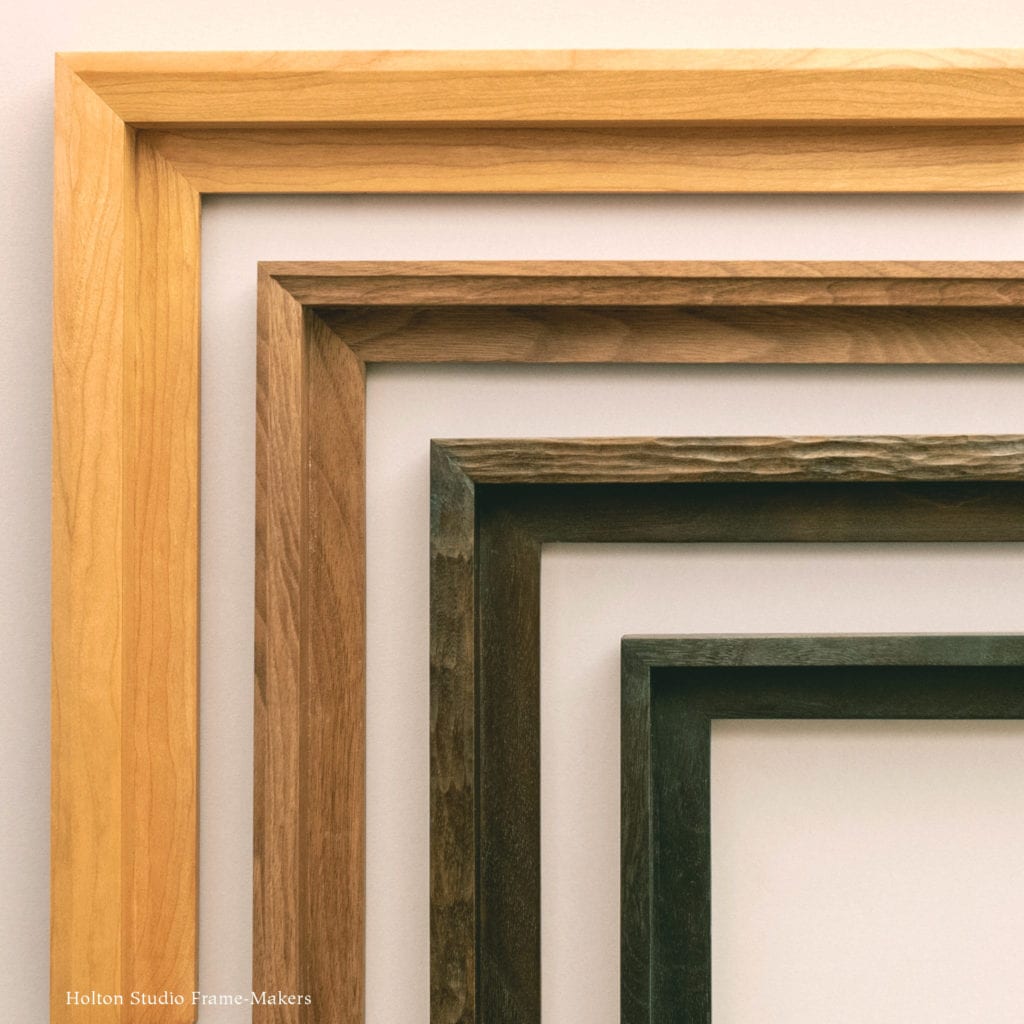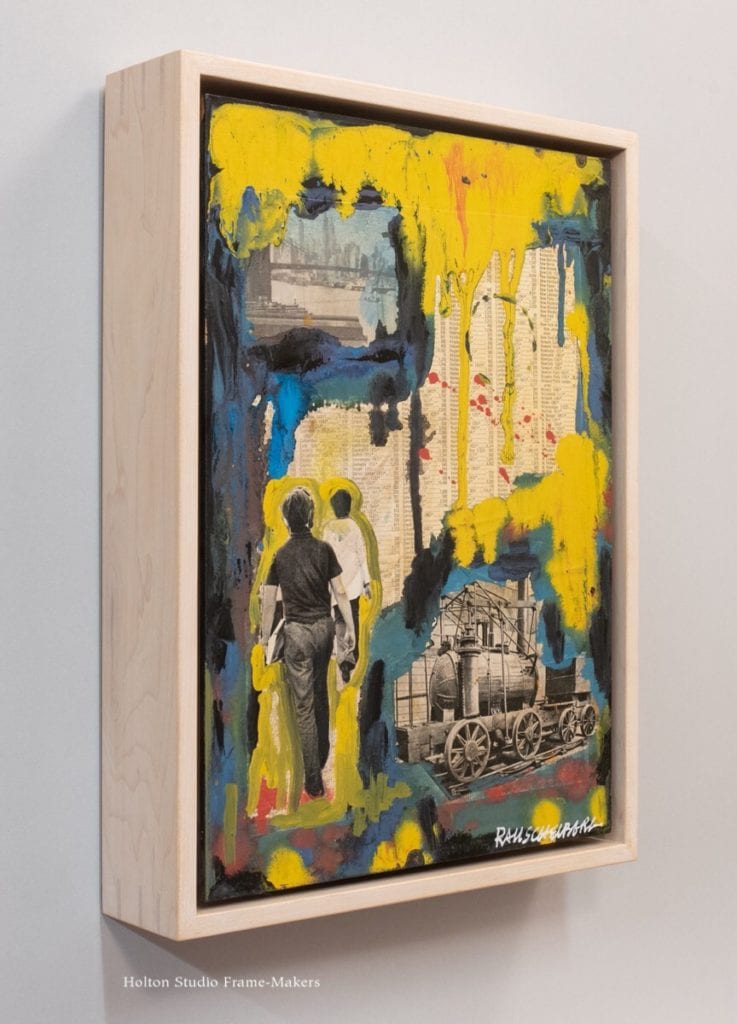Available in any wood and any width.

Floater frames—just four examples of what can be done. Shown, from outside in, cherry and walnut with clear finish, walnut with Medieval stain, walnut with black stain.
Floater (or “float”) frames are so named because the canvas appears to float inside the molding. Their biggest benefit is that they leave the canvas edge exposed rather than covered by a rabbet. Another advantage of the floater, no matter how narrow, is that it helps keep the canvas from warping.
Floaters came into vogue sometime in the middle of the last century and are a common contemporary presentation for paintings on stretched canvas or on board with strips on the back to add depth. They can be used for a minimalist look; the example at right, which leaves just 1/4″ black line around the canvas, is the most common form for a floater. But they can be made any width and can even have the broader width and more elaborate form of a traditional frame.
All of our floaters are made from scratch so can be sized to perfectly suit the dimensions of the canvas, including the depth. Typically, the floater is sized to leave a 1/8″ gap between the canvas and the visible vertical inner plane of the molding (again, “floating” inside the visible molding). The face of the frame should be at least 1/8″ above the surface of the canvas to help protect the painting. If you are ordering a frame, it is important to measure your canvas carefully in all three dimensions and make sure its corners are square. We will bore the flange (the panel that goes behind the painting) for flathead screws to go in to the back of your canvas.
All frames are custom made from scratch and are closed-corner and splined, just like all of our mitered frames.
And because all Floaters are made from scratch, they can be made in any number of profile shapes, such as these shown below. But so you don’t get overwhelmed by the choices, we suggest you start with our Mitered Frames. Or come in or call for ideas for your painting!
- Floater No. 310 CV—5/8″
- Floater No. 22—1″
- Floater No. 1 CV—5/8″
Framed Examples—
An 11″ x 14″ painting by Christin Coy shown in two different floater frame designs.






